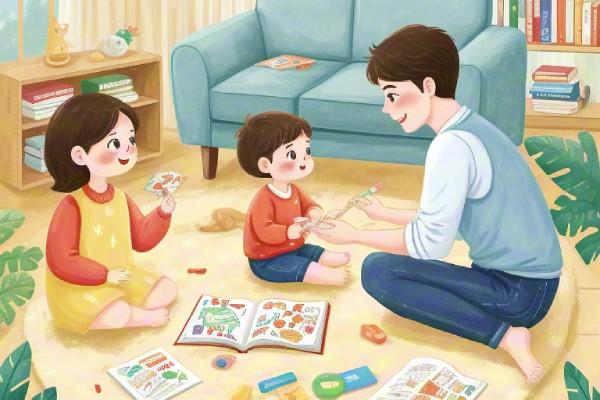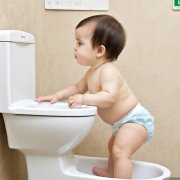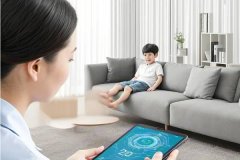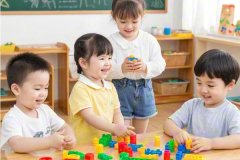Best educational activities for toddlers at home
Here’s a fresh take on some of the best educational activities for toddlers at home:

1. Sensory Bins
Create a sensory bin filled with safe objects like rice, pasta, or sand, and add small toys or letters. This encourages tactile exploration, fine motor skills, and can introduce basic concepts like shapes, colors, and letters. Toddlers learn through touch, and sensory bins are a great way to introduce them to the world around them.
2. Building Blocks
Classic building blocks, like wooden or foam ones, are perfect for sparking creativity and developing spatial awareness. As toddlers stack and build, they learn about balance, symmetry, and cause-and-effect. This also improves hand-eye coordination and encourages problem-solving.
3. Shape Sorting Games
Shape sorters are an excellent way to teach toddlers about shapes, colors, and spatial relationships. These activities can start simple with a basic set and then progress to more complex designs as they grow. This also enhances cognitive and problem-solving abilities.
4. Interactive Storytime
Read books with vibrant illustrations and ask your toddler questions about the pictures. Encourage them to predict what might happen next in the story or talk about the characters. Interactive reading helps develop language skills and fosters a love for books.
5. Music and Movement
Toddlers love rhythm! Sing songs, use instruments like tambourines or maracas, and dance to the beat. Music helps with language development, rhythm, and can improve motor skills as toddlers move and groove to different tempos.
6. Arts and Crafts
Simple crafts, like finger painting or gluing shapes to paper, help toddlers improve their fine motor skills and creativity. They learn to follow simple instructions, express themselves visually, and develop hand-eye coordination.
7. Color and Number Matching
Use flashcards, colored toys, or everyday objects to help toddlers learn colors and numbers. This activity can involve sorting or simple matching games, which enhance both cognitive and language skills.
8. Puzzle Play
Simple wooden puzzles with large pieces can be an excellent tool for cognitive development. Solving puzzles helps improve problem-solving skills, hand-eye coordination, and spatial awareness as they figure out how to fit the pieces together.
9. Pretend Play
Encourage imaginative play by setting up small scenarios, such as a pretend kitchen, doctor’s office, or grocery store. Pretend play nurtures creativity, helps develop social skills, and allows toddlers to understand the world through storytelling.
10. Nature Walks and Outdoor Exploration
Even if you have a small outdoor space or a nearby park, going on nature walks can be both educational and fun. Toddlers can explore leaves, flowers, rocks, and insects, learning about the natural world. You can ask them questions and teach them about the environment, which helps develop curiosity and observation skills.
These activities are designed to foster learning in an engaging, hands-on way. Make sure to adapt the difficulty and complexity to your toddler’s current developmental stage. The key is to keep the activities fun, interactive, and open-ended to encourage their natural curiosity and love for learning!
Here are some fun and educational activities for 2-year-olds that can be done at home, helping them develop their cognitive, motor, and social skills:
1. Color and Shape Recognition
- Activity: Create flashcards with basic shapes (circle, square, triangle) and colors. Show your child each card and name the shape or color. Then, encourage your child to point to objects around the house that match the card.
- Why it’s educational: Helps build foundational knowledge of shapes and colors, promoting early math skills and vocabulary development.
2. Building with Blocks
- Activity: Provide large building blocks (like wooden or plastic blocks) and let your child explore stacking and arranging them. Challenge your child to create different structures or shapes.
- Why it’s educational: Enhances fine motor skills, spatial awareness, and creativity. Also promotes problem-solving as they figure out how to balance and build.
3. Simple Puzzles
- Activity: Offer simple, large-piece puzzles with pictures of animals, objects, or shapes. Help your child fit the pieces together, gradually increasing difficulty as they improve.
- Why it’s educational: Improves hand-eye coordination, cognitive skills, and patience.
4. Interactive Storytime
- Activity: Read aloud to your child, using books with big, colorful pictures and simple text. Encourage them to point to objects or animals in the book and ask questions like "What sound does this animal make?"
- Why it’s educational: Builds language skills, improves attention span, and fosters a love for reading.
5. Water Play
- Activity: Fill a shallow container with water and provide cups, spoons, and small toys for your child to splash and pour. You can also add safe items like sponges or bubbles.
- Why it’s educational: Enhances sensory development, teaches cause and effect, and encourages motor skills as they pour, splash, and squeeze.
6. Music and Movement
- Activity: Play simple songs or children's music and encourage your child to clap, dance, or move along with the beat. You can use instruments like tambourines or maracas for added fun.
- Why it’s educational: Supports rhythm and coordination, helps with gross motor development, and boosts auditory processing.
7. Sorting and Categorizing
- Activity: Use different colored or shaped objects and ask your child to sort them into groups based on color, shape, or size. You can use toys, buttons, or even food items like fruit.
- Why it’s educational: Teaches early math concepts like sorting, categorizing, and counting, while also boosting organizational skills.
8. Pretend Play
- Activity: Set up a pretend kitchen, grocery store, or doctor’s office with toys or household items. Encourage your child to use their imagination and act out different scenarios.
- Why it’s educational: Promotes creativity, social skills, and problem-solving as children take on different roles.
9. Nature Exploration
- Activity: Go outside for a walk and observe nature together. Talk about what you see—trees, flowers, animals, and clouds. Collect leaves, stones, or flowers and make a collage.
- Why it’s educational: Encourages observation, curiosity, and a sense of wonder about the world. It also helps with language development as you describe what you see.
10. Sensory Bins
- Activity: Fill a container with different textured items like rice, sand, or beans. Hide small toys or objects inside and let your child explore by feeling, scooping, or searching.
- Why it’s educational: Enhances sensory development and fine motor skills, providing a hands-on learning experience.
These activities are simple, enjoyable, and stimulate learning in a variety of ways, fostering your child’s growth in language, motor skills, cognitive abilities, and creativity.









